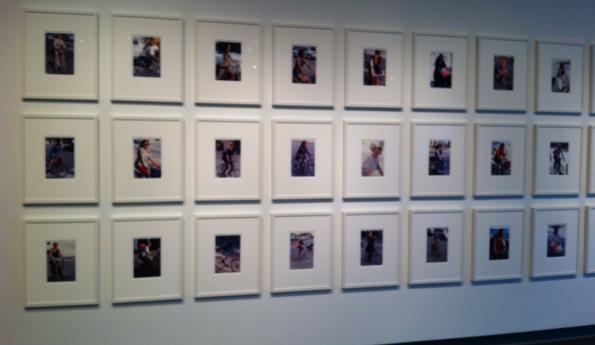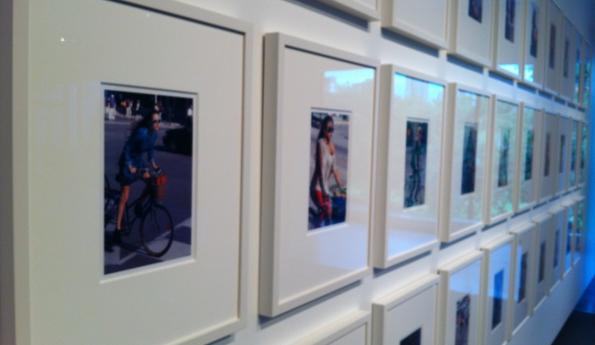An Evolutionary Look into Vancouver Street Photography
October 1, 2013 - January 26, 2014
Four contemporary Vancouver photographers examine and respond to Foncie Pulice and his body of work in this photographic exhibition, done in collaboration with Vancouver’s Capture Photography Festival. Artists include Lincoln Clarkes, Brian Howell, Angela Fama, and John Goldsmith.
Street photography is traditionally part of the “straight photography” movement, priding itself in the unaltered photograph that, without bias, documents real life. Street photography has continued to fascinate us for more than a century, capturing people with absolute candor in public places and providing a clear view of humanity.
The practice of street photography has become even more popular in the 21st century–favouring society’s increasing need to document, capture, and share everyday life snapshot by snapshot.
Foncie Pulice, with his silver camera made of war surplus materials, could be found on the corner of Robson and Granville Street from mid 1930’s through 1979. He took thousands of photographs–capturing families, couples, and friends happily strutting through downtown Vancouver. A strong sense of wanderlust permeates Foncie’s Vancouver Portraits.
The excitement and energy captured in the faces of Foncie’s public are at odds with the face society would put forward to the 21st century photographer–a public now highly sensitized to photography, privacyobsessed, and acutely aware of the disjunction between public and private realms.
To explore this notion, four contemporary Vancouver photographers–Lincoln Clarkes, Brian Howell, Angela Fama, and John Goldsmith–have been invited to examine and respond to Foncie Pulice and his body of work. These responses will generate conversation–a dialogue between viewer and viewed.
Lincoln Clarkes, directly influenced by Pulice, exhibits both a romantic and reverent orientation towards his subjects. His photographs, often voyeuristic and unposed, capture the experience of an ordinary public and the myriad of social forces that shape their existence. Brian Howell’s sociological examination of our technological codependence points towards a cultural obsession with smartphones and casts a light on the changing nature of street photography in an iPhone addicted landscape. Angela Fama’s work investigates themes of memory, meaning, emotion and change. Her interactive portrait studies investigate genuine emotion and the intimate relationship of the subject to the photographer. John Goldsmith’s work examines the social aspects of people inhabiting the built environment; his photographs combine a theatrical mood with the aesthetic and candor of contemporary street photography.
Artist Bios
Lincoln Clarkes, born in Toronto, 1957, is an award-winning photographer (National Magazine Awards, silver; Western Magazine Awards, gold), who has published two books, Heroines (Anvil Press), an epic photographic documentary of the addicted women of Vancouver's Downtown Eastside, which won the Vancouver Book Award, and Views, a retrospective of his works (Universal/Northern Electric). Peace Arch Entertainment produced a one-hour documentary film about Clarkes' Heroines project called, Heroines: A Photographic Obsession, which has aired on BRAVO! and Women's Television Network and has screened at numerous festivals. Clarkes has had solo exhibitions in Vancouver, Toronto and Seattle. His photographs have been used in the feature films Everything's Gone Green, by Douglas Coupland, directed by Paul Fox, and Atom Egoyan's The Sweet Hereafter.
Angela Fama is a photo-based artist, currently residing in Vancouver, BC. Born 1976 in Tennessee, raised in Ottawa and Zimbabwe, she has studied and practiced within the fine arts for most of her life. Majoring in photography for over a decade, Fama’s work has exhibited across Canada, most notably at The National Gallery in Ottawa and The Elliott Louis Gallery in Vancouver. Fama’s work investigates themes of memory, meaning, emotion, and change. Interested in exploring the tension inherent in our collective desire for both the temporal and timeless, Fama is often found burrowing through the endless excess, finding substance and beauty in the overlooked or forgotten core.
John Goldsmith is a Vancouver-based professional photographer. Born in Detroit, he holds a Master of Science in Chemistry and spent years studying the interaction of light and matter. He later worked as a scientist researching and developing holographic film plates. In 1998, John took an interest in photography and darkroom classes. After several corporate mergers and a pink slip, he moved north across the 49th parallel turning his spectrophotometer away from molecules and a camera towards people. John’s personal work follows a long tradition of straight photography but in a contemporary and often theatrical mode. His photographs have been featured as part of prestigious exhibitions including the Format Festival (UK), the Bòlit Contemporary Art Centre (Spain), Third Floor Gallery (Wales), and the Head On Photo Festival (Australia). Publishers regularly feature his artwork and include 01 Magazine, LPV Magazine, and SHUTR Magazine. His clientele includes the Vancouver Foundation, Boston Review, and Condé Nast, to name a few. John regularly gives invited lectures about street photography, ethics, and the pursuit of artistic expression which are hosted by camera clubs including the University of British Columbia. John is an author, founding member of the Strange.rs Collective, and his artwork is held in numerous private collections.
Brian Howell is an award-winning editorial photographer and artist who has exhibited both nationally and internationally. He holds a BFA from Ryerson Polytechnic University in Film & Photograph. Howell is a regular contributor to Geist, Maclean's, and Vancouver magazine, and has published a number of books including Fame Us, documenting celebrity impersonators, and One Ring Circus, following the minor leagues of professional wrestling. Brian Howell is now based in Delta, BC.





